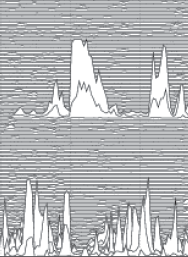ECG Statistics, Noise, Artifacts, and Missing Data - Chapter 3
G.D. Clifford
 in Advanced Methods for ECG Analysis,
(Eds. G. D. Clifford, F. Azuaje and
P. E. McSharry), Artech House,
London, 2006.
in Advanced Methods for ECG Analysis,
(Eds. G. D. Clifford, F. Azuaje and
P. E. McSharry), Artech House,
London, 2006.
Chapter 3 presents a detailed phenomenological overview of the ECG, both in terms of traditional clinical parameters (and their normal limits), and in terms of metrics more familiar to the signal processor. Discussions of how these parameters change with different heart rates, activity levels, sleep states and autonomic nervous system activity are given. Methods for quatifying and dealing with the effect of noise, artifact and nonstationarities (such as ectopy) on ECG metrics, including heart rate variability (HRV), heart rate turbulence (HRT), and QT turbulence, are detailed.
Links:
- ECGSYN - Realistic artificial ECG, BP and Respiratory waveform generation, written in Matlab, C and Java. Various versions exist, more numerous that the one found on PhysioNet.
- RRGEN - Realistic beat-to-beat intervals for sinus rhythm, ectopy, noise and AF.
- ECGtools - A selection of ECG analysis tools in Matlab including a self-explaining QRS detector, filtering tools and HRV analysis algorithms.
- Artificial Noise Generators in Matlab (white, pink and brown noise).
- 6.555 Materials related to Julie Greenberg's Biomed Signal & Image Processing course
- Matlab HRV tools by Danny Kaplan
- Physionet HRV tools in C
- HRV2006 - Course on Heart Rate Variability run by Physionet & Harvard
- Heart Rate Turbulence Software and Papers
- EMD and HHT applied to HRV - Matlab code and a simple example
Contents:
3.1 Introduction
3.2 Spectral and Cross-Spectral Analysis of the ECG
3.2.1 Extreme Low and High Frequency ECG
3.2.2 The Spectral Nature of Arrhythmias
3.3 Standard Clinical ECG Features
3.4 Nonstationarities in the ECG
3.4.1 Heart Rate Hysteresis
3.4.2 Arrhythmias
3.5 Arrhythmia Detection
3.5.1 Arrhythmia Classification from Beat Typing
3.5.2 Arrhythmia Classification from Power-Frequency Analysis
3.5.3 Arrhythmia Classification from Beat-to-Beat Statistics
3.6 Noise and Artifact in the ECG
3.6.1 Noise and Artifact Sources
3.6.2 Measuring Noise in the ECG
3.7 Heart Rate Variability
3.7.1 Time Domain and Distribution Statistics
3.7.2 Frequency Domain HRV Analysis
3.7.3 Long-Term Components
3.7.4 The Lomb-Scargle Periodogram
3.7.5 Information Limits and Background Noise
3.7.6 The Effect of Ectopy and Artifact, and How to Deal with It
3.7.7 Choosing an Experimental Protocol; Activity-Related Changes
3.8 Dealing with Nonstationarities
3.8.1 Nonstationary HRV Metrics and Fractal Scaling
3.8.2 Activity-Related Changes
3.8.3 Perturbation Analysis